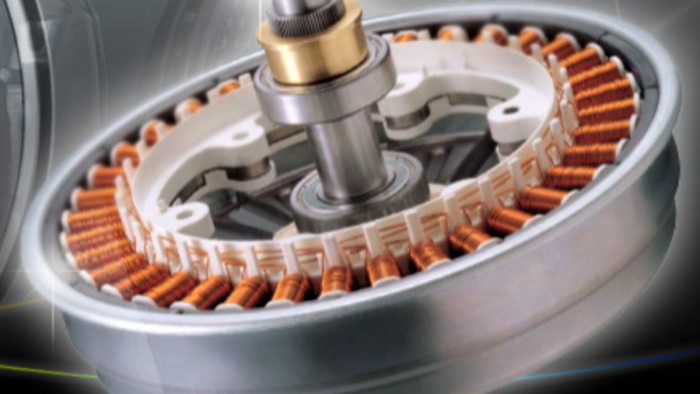As of 2025, ZF will begin to market its new line of electric motors that include a new design of the motor-generator and the rest of the components that make up the power train. The complete system is made up of the transmission, the inverter - with the power electronics that handle alternating and continuous current - and the software that integrates the entire lot. The set offers a format and specifications superior to those that can be developed internally by all other automobile manufacturers, according to ZF.
ZF is a German global technology company supplying systems for passenger cars, commercial vehicles and industrial technology. According to what they state on their webpage, “…sustainability is an integral part of ZF Group strategy. Its targets include complete climate neutrality by 2040. However, sustainability means far more to us than climate protection. In addition to climate and nature, we focus on the dimensions of people and lasting values”.

For a few years now, the company has been showing its commitment to electromobility: the creation of a new internal division dedicated exclusively to electrified transmission lines showed its commitment to the development of components for electric power trains. At the same time it reduced the development of internal combustion engines, since it is a line of business that will obviously stop providing benefits in the coming years; the result of this work are the features being presented for 2025.
ZF indicates that compared to the current generation, its new engines are more compact and lighter, more efficient, more sustainable, and therefore they offer a higher energy density. Furthermore, their scalability allows them to be cheaper to manufacture than electric motors developed for a single application.
ZF's integrated power-trains can handle a wide variety of tasks. They can function as 134hp secondary units (in dual-motor electric vehicles) or as 402hp primary units. Because the internal parts are standardized, ZF ensures that they can be adapted to all electric vehicles on the market.
In order to achieve these specifications, ZF has worked on cooling and copper winding design, which is brand new as compared to current systems. The company will offer three motor technologies: permanent magnets, asynchronous (that is, no magnets), also known as induction motors, and externally excited motors.

In the case of permanent magnet motors, the rotor - the rotating part - maintains the usual characteristics of this component, with the magnets located right on it. The novelty is found in the stator cooling water jacket, which is the one that contains the copper windings that generate the magnetic field induced in the magnets. Inside, some grooves are responsible for carrying the “ZF Ecofluid E”, a dielectric refrigerant oil (which does not conduct electricity), that is in direct contact with the windings.
This system works well regardless of the temperature, enabling the motor to cover a wide range of power characteristics, while drastically reducing its losses. This prevents the engine from getting too hot and extending its life through more efficient operation.
In addition, ZF says its systems are up to 14% more efficient than existing power-trains. Furthermore, their scalability allows for savings in complexity, investment and manufacture; and their production cost is lower than a power-train developed for a single application.
The design of the windings has also changed, moving away from the usual hairpin type, so called because the pieces of wire that form them have that appearance and are joined by hundreds of solder points. In this case, they are twisted windings formed in a single step and have only 24 solder points.

The winding head, where the joints are made, is smaller (15 mm instead of 28 mm). Cooling allows the engine to run continuously and at higher rpm rate, nominally reaching 85% of maximum power. This configuration also allows heavy rare earth elements to be reduced to a mere 1%, making it easier to improve cooling. The new winding design reduces overall motor length by 10%, increases power and torque density, and reduces the amount of raw materials used by a 10%.
The transmission design is also quite a departure from the usual. Since 2011, ZF's electric transmission consists of a typical two-stage gear set. The reduction of engine revolutions is carried out once in the first stage and again in the second.
Subsequently, power was transferred to the wheels via a separate differential. Now the new transmission includes a stack of two “planetary” gear sets (one inside the other) and also does the job of a differential. It's based on technology similar to what ZF introduced into the 9HP front-wheel drive automatic transmission back in 2011. The result takes up 25% less space than current designs, weighs 10% less and suffers 20% less of transmission losses. At the same time, noise reduction and other refinements actually match existing technology.
Hairpin #technology is becoming the standard for electric motors. And we are using this technology in our new CeTrax 2 electric central drive.
More about innovative solutions for e-mobility: https://t.co/e7zCf5y8wD#IAA2022 #NextGenMobility #ZFnow pic.twitter.com/23mpHSANj2— ZF Group (@ZF_Group) September 19, 2022
This is basically the story of ZF's new generation of electric motors, developed to be part of the big transition towards a future of more sustainable transportation. It remains to be seen if they will be able to outperform Tesla and the other brands mentioned at the beginning; but in any case, it will be an excellent benchmarking opportunity for all electric car manufacturers around the world.
Source: ZF Friedrichshafen
All images courtesy of Tesla Inc.
Nico Caballero is the VP of Finance of Cogency Power, specializing in solar energy. He also holds a Diploma in Electric Cars from Delft University of Technology in the Netherlands, and enjoys doing research about Tesla and EV batteries. He can be reached at @NicoTorqueNews on Twitter. Nico covers Tesla and electric vehicle latest happenings at Torque News.











